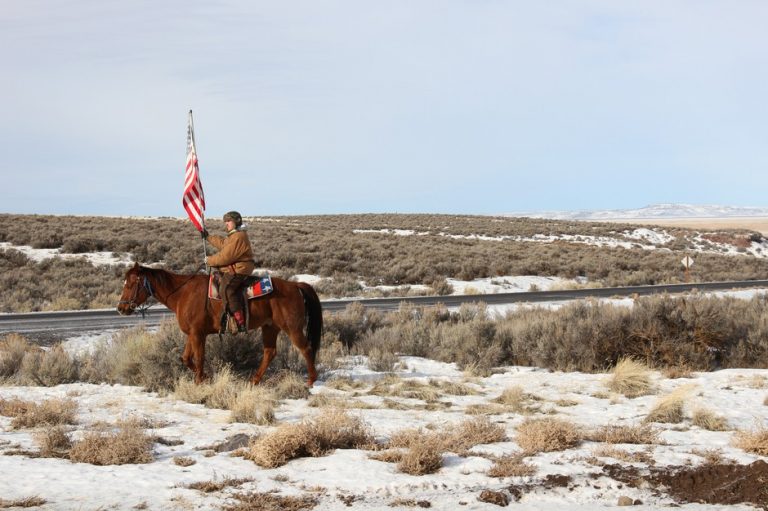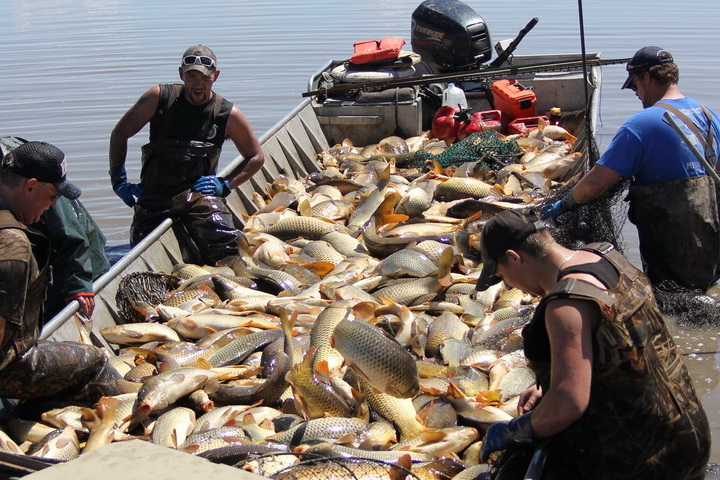
This past spring I attended the Harney County Migratory Bird Festival in the arid, mountain desert of Eastern Oregon. The festival was a collaborative effort between regional conservation, environmental advocacy and community groups and encompassed guided tours, workshops and lectures with biologists, environmentalists, and citizen scientists. Many of the events took place at the Malheur National Wildlife Refuge. Its 187,757 acres of wildlife habitat serve as a crucial stop for hundreds of migratory bird species traveling along the Pacific Flyway.
I visited the festival as a personal reintroduction to the refuge in preparation for summer research and a self-initiated work exchange and artist residency at Malheur. My father is an avid birder. I visited the refuge throughout my childhood, our travels timed with the seasonal bird migration. It is the site where my dad ultimately wants his ashes scattered. For years, my siblings and I have known that we will someday make a trip in remembrance and grief. My summer at the refuge was spent mapping the intersections between my family history and animal history, between loss, failure, time and change, between national and natural history.
During the Festival, I attended a tour called “Restorative Birding” hosted by the High Desert Partnership, a regional non-profit that provides a platform for collaborative decision-making to address pressing ecological and economic issues facing the community. The tour focused on habitat restoration projects and historic tensions between cattle ranching (and economic viability in general) and environmental stewardship.

In 2016 the Malheur Wildlife Refuge was occupied by the Bundy family and their supporters. Heavily armed with weapons and the compounded mythologies of a “Don’t Tread on Me” cowboy conservatism, the group of anti-government ranchers and militants advocated for the dissolution of federally owned public lands. Despite the 40-day occupation in which they caused millions of dollars worth of damages and irreversible damage of Native artifacts, the occupation leaders were acquitted in January 2018. The Bundy family has been involved in multiple violent conflicts with the Bureau of Land Management and owes over $1,000,000 in withheld cattle grazing taxes. The family has gained celebrity in regions of the rural West and corners of the internet. Emboldened by their post occupation acquittal, they have continued as outspoken opponents of “federal overreach” and public land. Ryan Bundy, one of the occupation leaders, is continuing their crusade while campaigning for Governor of Nevada. The Malhuer Occupation and subsequent trial became part of national conversations about conservation, resource extraction, nationalism, and the rise (or, more realistically, increased visibility of) right-wing extremism. The Malheur occupation exists in a long, fraught political history in Eastern Oregon, Western Idaho, and Northern Nevada between environmental stewardship, regional industry, Indigenous needs and demands, and land privatization.
Some locals told me that during the occupation the nearby town of Burns was politically divided. Roughly half of the community works for the federal government with 75% working for a government agency in some capacity, whether local, state, or federal. Others are staunch critics of the “feds”: a general distrust of a distant boogeyman and some promises of change, jobs, and better days unfulfilled. One community member told me that the occupation divided the town. Lifelong friendships ended, and many federal employees (US Fish and Wildlife, US Forest Service, Bureau of Land Management) left the area traumatized in the wake of violent threats. Others told me that few locals sympathized with the occupiers. The majority of the occupiers were outsiders armed with weapons and intimidation tactics. Many community members, including ranchers, denounced the Bundys and their supporters, pleading with them to go home. One refuge employee spent 20 years of their career trying to bridge the ideological gap between environemntalists, farmers, and ranchers. Without this multi-agency effort, he speculated that the occupation could have been much worse with a grimmer outcome. Despite local skepticism of the federal government, the region is economically dependent on it: they are one of the largest employers in the region and have been subsidizing the cattle industry since the 1800s. The industry and surrounding communities would likely not exist as they do without the intervention of the federal government.

During the Migratory Bird Festival, the influx of Patagonia clad, liberal birders from Portland and Seattle highlighted the economic disparities of the state and a distinction between individuals with time for travel and leisure and those with less. Locals either enthusiastically or reluctantly catered to the influx of “Westsider” tourists with binoculars squabbling over sightings of rare birds and puffing their chests in bird-like displays of dominance. The festival is a large yearly event for the county, providing an annual bump in the regional economy. As is common in the American West, this area of Eastern Oregon has lived periods of booms and busts, resource-based industries subsidized and later abandoned when the resources or profits run dry.
During the Festival, I learned about another issue facing the Refuge: Common Carp. The U.S. Fish and Wildlife has been entrenched in a darkly comical, Sisyphean battle of their own making since the 1950s. Carp were introduced by individuals and the U.S. Fish and Wildlife’s predecessor, the U.S. Fish Commission (1871–1940), throughout the United States in the late 1800s and early 1900s. Now considered an invasive species, the fish are highly successful and have drastically altered the ecosystem at Malheur (research on how drastically varies). With few predators, they lay millions of eggs per year with a 90% success rate. Conservation organizations have spent an incredible amount of resources while desperately testing and exhausting new approaches to population reduction. Some Malheur biologists are resigned to a career of carp damage control, knowing they can never fully reverse the problem, only try to stop it from getting worse. The carp are the recurring consequence of a century-old decision, a mistake that can be easily condemned as short-term thinking in hindsight. Refuge staff are trapped between their responsibility to what was initiated and those that were implicated, while trying to juggle financial restrictions, community stakeholders, climate concerns, and evolving conservation perspectives, practices, and goals.
Some biologists wonder how much longer Common Carp will be targeted, noting that many other introduced species became “naturalized” and that there are much bigger fish to fry, so to speak. Others, however, see the issue as partially a public relations problem. The defamation of carp, while rooted in the reality of ecological change, is also deeply connected to a rhetoric of xenophobia and otherness. While carp are enjoyed as a food source throughout the world and were introduced in the United States as such, they have been condemned by many in the U.S. as “trash fish” not worthy of our (white, middle class) American palates. While I understand the environmental issues the carp present, their mass-slaughter is undeniably dark, and extermination is an approach of Western science tied to histories of imperialism and colonialism. The fish are blissfully (for a time) unaware of the battle that has been waged. They are accidental and unknowing participants in a multi-million dollar cat and mouse game. The humans engaged in the action are much quicker to condemn the fish, ignoring the irony of the common “invasiveness” of our own species.

–Erin Mallea, MFA ’19
1. Migratory Ross’s Geese stopping in Harney County along the Pacific Flyway enroute to the Arctic.
2. Ross’s Geese stopping in Harney County enroute to the Arctic.
3. “Duane Ehmer patrols the Malheur National Wildlife Refuge complex with his horse Hell Boy during the occupation of the refuge in early 2016”, Image credit: Amanda Peacher, Oregon Public Broadcasting
4. “A boat load of invasive carp are ready to go to shore for data collection” at Malheur National Wildlife Refuge, image credit: US Fish and Wildlife




